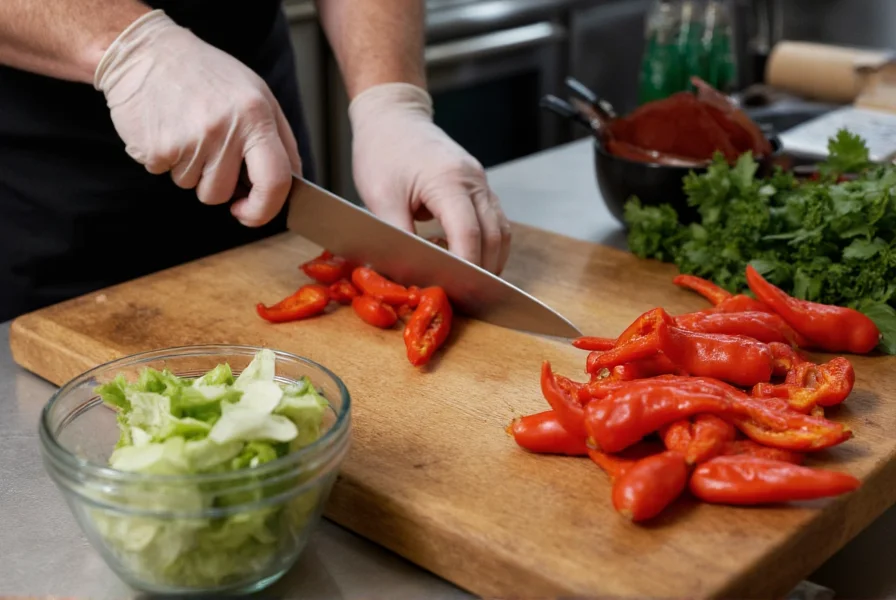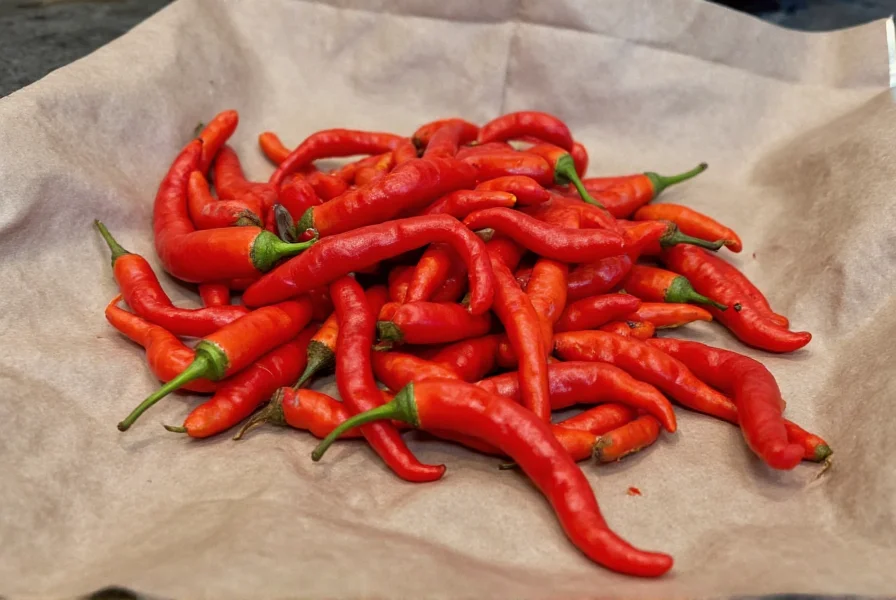The ghost pepper, scientifically known as Bhut Jolokia, first gained international attention when it was certified as the world's hottest chili pepper by Guinness World Records in 2007. Native to Northeast India, this fiery pepper has captivated spice enthusiasts and culinary professionals alike with its intense heat and distinctive flavor profile.
Understanding the Scoville Scale
Developed by pharmacist Wilbur Scoville in 1912, the Scoville Organoleptic Test originally measured chili pepper heat through human taste panels. Today, high-performance liquid chromatography (HPLC) provides precise measurements of capsaicinoid content, which is then converted to Scoville Heat Units. The higher the SHU rating, the more capsaicin a pepper contains, resulting in greater perceived heat.
Ghost Pepper Heat Characteristics
Ghost peppers deliver more than just intense heat—they offer a complex flavor experience. The initial taste reveals subtle smoky, fruity notes before the intense heat builds gradually over 30-45 seconds. This delayed heat response can catch inexperienced eaters off guard, making proper handling essential.

Pepper Heat Comparison Chart
| Pepper Variety | Scoville Heat Units (SHU) | Heat Relative to Jalapeño |
|---|---|---|
| Bell Pepper | 0 SHU | 0x |
| Jalapeño | 2,500-8,000 SHU | 1x |
| Habanero | 100,000-350,000 SHU | 20-40x |
| Ghost Pepper (Bhut Jolokia) | 855,000-1,041,427 SHU | 100-150x |
| Carolina Reaper | 1,400,000-2,200,000 SHU | 150-250x |
Practical Implications of Ghost Pepper Heat
Understanding ghost pepper scoville scale measurements isn't just academic—it has real-world consequences for culinary applications. The extreme heat level means that a single ghost pepper can flavor an entire pot of curry or stew. Chefs typically use just a small portion of one pepper, often removing seeds and membranes where capsaicin concentration is highest.
When comparing ghost pepper heat level measurement to more common varieties, ghost peppers are approximately 100-150 times hotter than jalapeños and about three times hotter than habaneros. This dramatic difference explains why many people experience significant physical reactions when consuming ghost peppers, including sweating, flushing, and even temporary breathing difficulties.

Safety Considerations for Handling Ghost Peppers
Proper handling of ghost peppers is critical due to their extreme capsaicin content. Always wear nitrile gloves when preparing ghost peppers, as latex gloves don't provide adequate protection. Avoid touching your face, especially eyes, during and after handling. Work in a well-ventilated area, as capsaicin vapors can cause respiratory irritation.
If you experience skin irritation from ghost pepper contact, wash the affected area with soap and cold water, then apply milk or a dairy-based product to neutralize the capsaicin. For severe reactions, seek medical attention. Never use water to alleviate the burning sensation, as capsaicin is oil-based and water will only spread it.
Culinary Applications and Cultural Significance
Despite their intense heat, ghost peppers have been used for centuries in Northeast Indian cuisine, particularly in Assam, Nagaland, and Manipur. Local populations have developed a high tolerance for the heat and use the peppers to preserve food and add distinctive flavor to traditional dishes.
In contemporary cooking, ghost peppers appear in hot sauces, specialty salsas, and even some craft beers. Their unique flavor profile—smoky with subtle floral notes—makes them valuable beyond just their heat. Many competitive eating challenges feature ghost peppers, though participants should understand the potential health risks involved with consuming such extreme heat levels.
Ghost Pepper Varieties and Growing Conditions
Ghost peppers come in several color varieties including red, orange, yellow, and chocolate. The red ghost pepper is most common, but color variations don't significantly affect heat levels. These peppers thrive in hot, humid climates with well-drained soil and require approximately 120 days to reach full maturity.
Growing ghost peppers at home requires careful consideration, as the plants produce capsaicin throughout the entire plant, not just in the fruit. Gardeners should wear protective gear when handling plants and keep them away from children and pets. The peppers typically measure 2.4-2.8 inches long with a distinctive wrinkled appearance.
Frequently Asked Questions
How many times hotter is a ghost pepper than a jalapeño?
Ghost peppers are approximately 100-150 times hotter than jalapeños. While jalapeños measure between 2,500-8,000 Scoville Heat Units, ghost peppers range from 855,000 to over 1,041,427 SHU. This dramatic difference means even a small amount of ghost pepper can overwhelm dishes that would normally use multiple jalapeños.
What does a ghost pepper taste like beyond the heat?
Before the intense heat sets in, ghost peppers offer a complex flavor profile with smoky, sweet, and slightly floral notes. Many describe an initial fruity taste followed by earthy undertones. The flavor complexity is why professional chefs value ghost peppers despite their extreme heat—they add distinctive character to dishes when used judiciously.
How long does the burning sensation from a ghost pepper last?
The intense burning sensation from consuming a ghost pepper typically peaks within 5-10 minutes and can last anywhere from 20 minutes to several hours, depending on individual tolerance and the amount consumed. The delayed onset (30-45 seconds after consumption) often catches people by surprise. Dairy products like milk or yogurt provide the most effective relief as they contain casein that binds to capsaicin.
Can you build tolerance to ghost peppers over time?
Yes, regular consumption of hot peppers can build tolerance through a process called desensitization. Capsaicin temporarily depletes substance P, a neurotransmitter that transmits pain signals. With repeated exposure, nerve endings become less responsive. However, this tolerance is temporary and requires ongoing exposure to maintain. Experts recommend gradually increasing heat levels rather than jumping directly to ghost peppers.
Are there any health benefits to consuming ghost peppers?
Ghost peppers contain capsaicin, which has been studied for potential health benefits including pain relief, improved metabolism, and anti-inflammatory properties. The peppers also provide vitamin C, vitamin A, and antioxidants. However, consuming extremely hot peppers carries risks including gastrointestinal distress and potential damage to the digestive tract lining. Moderation is key, and individuals with certain medical conditions should consult a healthcare provider before consuming.











 浙公网安备
33010002000092号
浙公网安备
33010002000092号 浙B2-20120091-4
浙B2-20120091-4